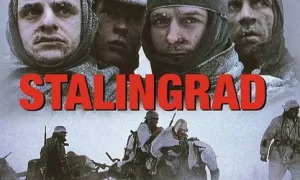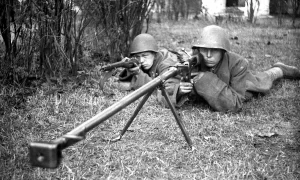Dachau – One of the Worst Concentration Camps of WW2
Founded on March 22, 1933 in Dachau (federal state of Bavaria), near Munich. The Dachau concentration camp was designed by the future commander of Dachau, Theodor Eike, at the site of an ammunition manufacturing plant. Eike contributed a lot to the functioning of the concentration camp itself. The camp he built was considered the benchmark for other concentration camps. The system of torture, turning into atrocities, was first practiced in Dachau, and then transferred to other camps. It was Eike who developed a system in which the functions of warders were transferred to prisoners of war, who showed even greater rigidity in their treatment of other prisoners to facilitate their own fate… The concentration camp became the first “testing ground” where the system of punishment and other forms of physical and psychological influences on prisoners was worked out.

Dachau concentration Camp Ariel View
Until the outbreak of World War II, people were held in Dachau, who were considered, for various reasons, to “pollute” the Aryan race, according to racial theory. These were political opponents of the Nazi regime, first of all, communists, Slavic races, socialists, clergy opposed to the regime, as well as the mentally ill, prostitutes, drug addicts, etc.
Dachau prisoners were forced to work as free labor in the surrounding industrial enterprises, including those of the IG Farbenindustri concern.
During the war, in the fall of 1941, in concentration camps, Soviet POW officers and political workers who had been selected from the camps were massacred — at least 34,000 people were killed. In Dachau, such executions were carried out at the Hebertshausen training ground.
Dachau has gained an ominous reputation as one of the most horrific concentration camps in which medical experiments were carried out on prisoners. Heinrich Himmler and other high-ranking Nazis regularly visited Dachau on inspection trips, where they observed these experiments. The purpose of medical experiments was, among other things, to study the possibility of controlling human behavior. This was done on the orders of the National Socialist military departments. In addition, Sigmund Ruscher, by order of Himmler, studied the effects of low pressure and cold on humans. Many of the experimental prisoners died, but Rasher was not able to find a solution to the problem of hypothermia.

Dachau concentration Camp Prisoners
The personnel in gas masks opened the cans, threw Zyklon B absorbent material into the ventilation hatches and closed them. The released gas entered the chambers through the ventilation
Liberation
The underground organization of prisoners operating in Dachau led by Walter Neff and Russian POW’s on April 28, 1945, the day before the arrival of American troops, raised an uprising., having thwarted the existing plan to exterminate the surviving prisoners.
Last of the camp commandanst, Obersturmbannführer SS Edward Veyter, fled on 26 April. SS Obersturmbannfuehrer Martin Gottfried Weiss remained the camp leader, but he also left the camp the day before its liberation by the Americans.
Liberation of the camp

Dachau concentration Camp Shooting Guards
Chronology of events:
April 29, 1945
6:00 The new camp commandant Obersturmführer SS Heinrich Skodzenski gave the order to his subordinates to surrender. At that time, about 560 people were under his command, some of them were wounded in the hospital.
10:55 Commandant Skodzenski went out to meet the Americans, but was killed in the ensuing firefight while trying to surrender the camp.
11:00 Parts of the 3rd Battalion of the 45th American Division entered the camp.
11:30 American soldiers, horrified by what they saw in the camp, killed one hundred and twenty-two captured German soldiers, mostly SS. The escaped prisoners killed about forty more guards, some of them with their bare hands.
12:00 Order in the camp is temporarily restored. Three hundred and fifty-eight German soldiers were taken prisoner, many of them were wounded soldiers from the hospital, taken from their beds.
12:05 Someone called out: “They are trying to escape!” – and opened fire with a machine gun 30-caliber, killing twelve soldiers before Lt. Col. Felix Sparks (Eng. Lt. Your Colonel of Felix L. Sparks) pushed him away from the gun and said, “What the hell are you doing ?!”
12:15 Order is restored again.
12:30 Most of the prisoners returned to their cells.
14:45 Three hundred and forty-six captured German soldiers were shot at the wall of block C. At least one German soldier was killed by prisoners in the same place. The survivors were finished off with single shots.
18:00 Additional units arrive to help guard the camp.
None of the participants in the execution was punished, all charges were dropped by General Patton. Results of the investigation of Lieutenant Colonel Joseph Viteykera on 8 June 1945 the year were classified.
The fate of the five hundred and sixty camp guards is as follows:
- Shot on the spot – 122
- Killed by prisoners – 40
- Shot with machine guns – 358
- Killed in a shootout – 30
- Ran Away – 10

Celebrating Liberated Prisoners













